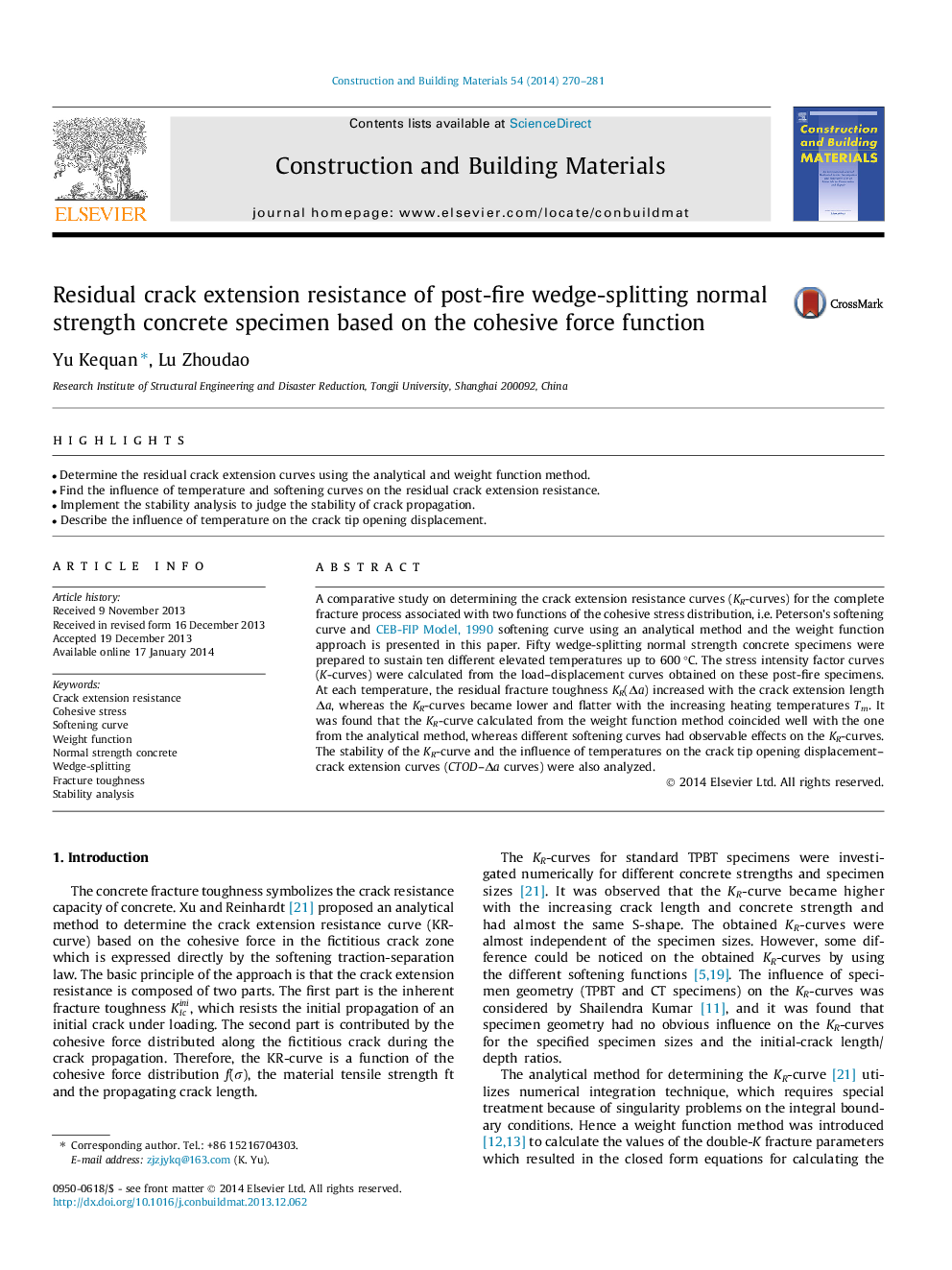| Article ID | Journal | Published Year | Pages | File Type |
|---|---|---|---|---|
| 6723748 | Construction and Building Materials | 2014 | 12 Pages |
Abstract
A comparative study on determining the crack extension resistance curves (KR-curves) for the complete fracture process associated with two functions of the cohesive stress distribution, i.e. Peterson's softening curve and CEB-FIP Model, 1990 softening curve using an analytical method and the weight function approach is presented in this paper. Fifty wedge-splitting normal strength concrete specimens were prepared to sustain ten different elevated temperatures up to 600 °C. The stress intensity factor curves (K-curves) were calculated from the load-displacement curves obtained on these post-fire specimens. At each temperature, the residual fracture toughness KR(Îa) increased with the crack extension length Îa, whereas the KR-curves became lower and flatter with the increasing heating temperatures Tm. It was found that the KR-curve calculated from the weight function method coincided well with the one from the analytical method, whereas different softening curves had observable effects on the KR-curves. The stability of the KR-curve and the influence of temperatures on the crack tip opening displacement-crack extension curves (CTOD-Îa curves) were also analyzed.
Keywords
Related Topics
Physical Sciences and Engineering
Engineering
Civil and Structural Engineering
Authors
Yu Kequan, Lu Zhoudao,
